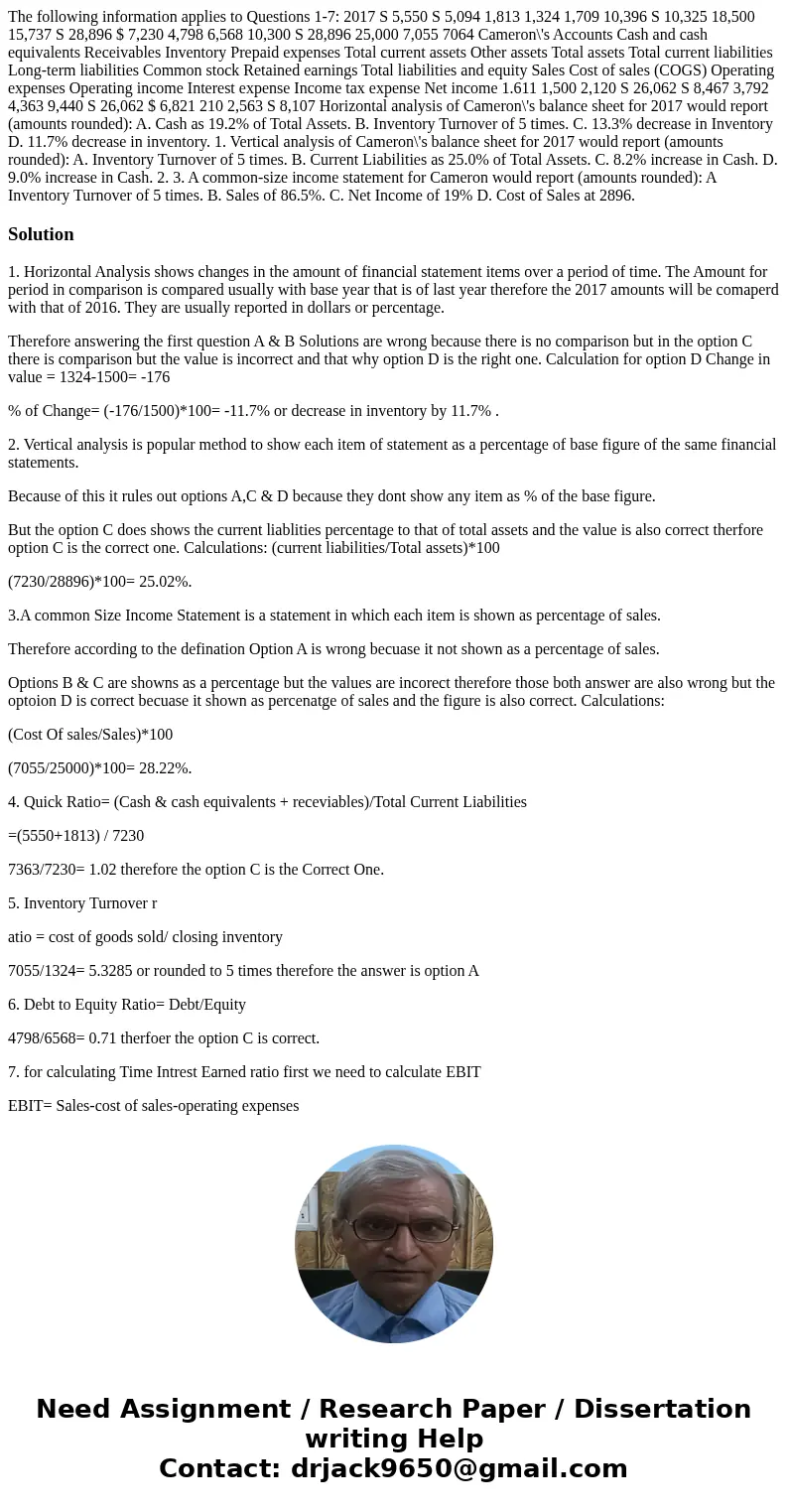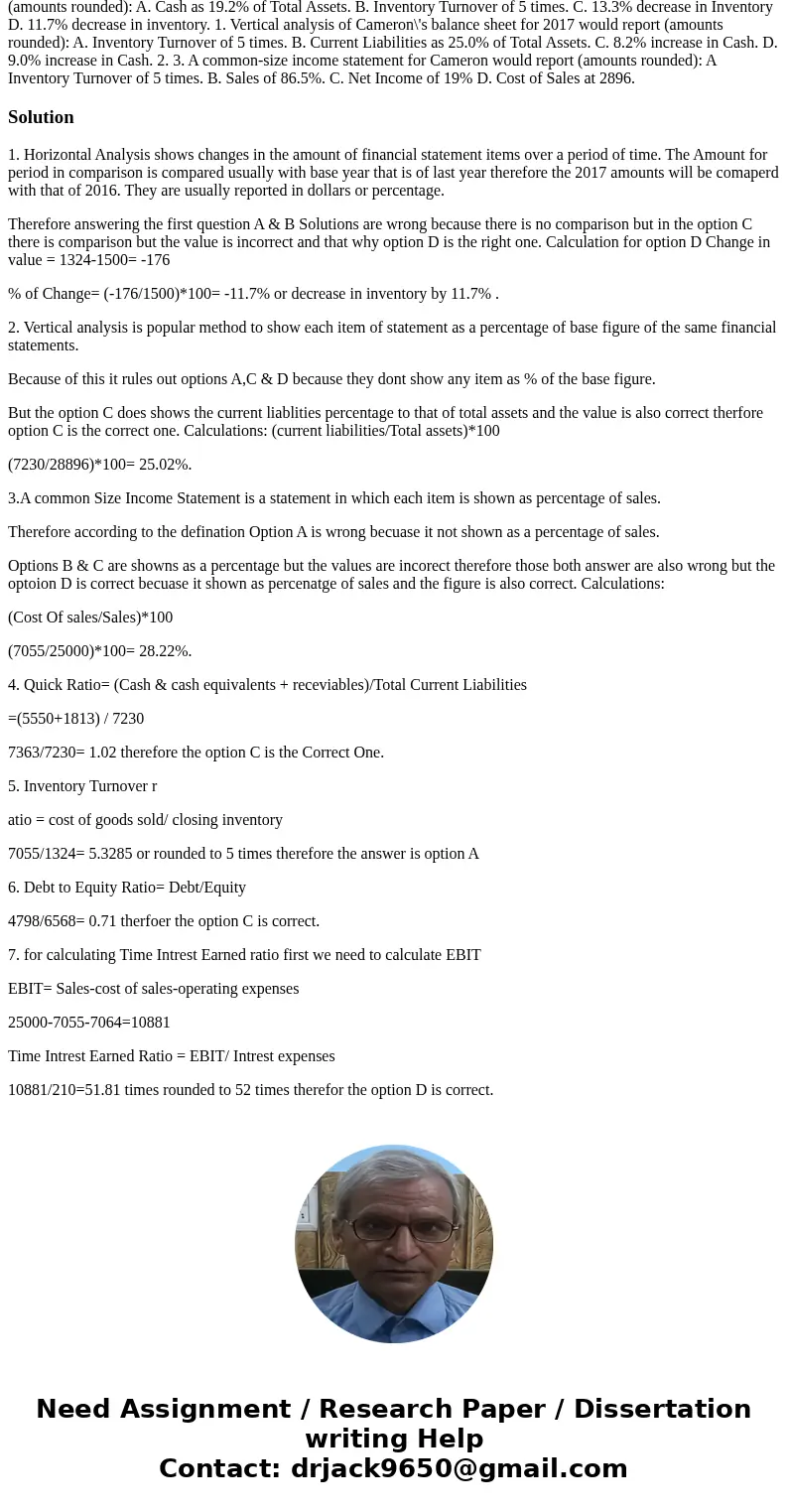The following information applies to Questions 17 2017 S 555
Solution
1. Horizontal Analysis shows changes in the amount of financial statement items over a period of time. The Amount for period in comparison is compared usually with base year that is of last year therefore the 2017 amounts will be comaperd with that of 2016. They are usually reported in dollars or percentage.
Therefore answering the first question A & B Solutions are wrong because there is no comparison but in the option C there is comparison but the value is incorrect and that why option D is the right one. Calculation for option D Change in value = 1324-1500= -176
% of Change= (-176/1500)*100= -11.7% or decrease in inventory by 11.7% .
2. Vertical analysis is popular method to show each item of statement as a percentage of base figure of the same financial statements.
Because of this it rules out options A,C & D because they dont show any item as % of the base figure.
But the option C does shows the current liablities percentage to that of total assets and the value is also correct therfore option C is the correct one. Calculations: (current liabilities/Total assets)*100
(7230/28896)*100= 25.02%.
3.A common Size Income Statement is a statement in which each item is shown as percentage of sales.
Therefore according to the defination Option A is wrong becuase it not shown as a percentage of sales.
Options B & C are showns as a percentage but the values are incorect therefore those both answer are also wrong but the optoion D is correct becuase it shown as percenatge of sales and the figure is also correct. Calculations:
(Cost Of sales/Sales)*100
(7055/25000)*100= 28.22%.
4. Quick Ratio= (Cash & cash equivalents + receviables)/Total Current Liabilities
=(5550+1813) / 7230
7363/7230= 1.02 therefore the option C is the Correct One.
5. Inventory Turnover r
atio = cost of goods sold/ closing inventory
7055/1324= 5.3285 or rounded to 5 times therefore the answer is option A
6. Debt to Equity Ratio= Debt/Equity
4798/6568= 0.71 therfoer the option C is correct.
7. for calculating Time Intrest Earned ratio first we need to calculate EBIT
EBIT= Sales-cost of sales-operating expenses
25000-7055-7064=10881
Time Intrest Earned Ratio = EBIT/ Intrest expenses
10881/210=51.81 times rounded to 52 times therefor the option D is correct.


 Homework Sourse
Homework Sourse